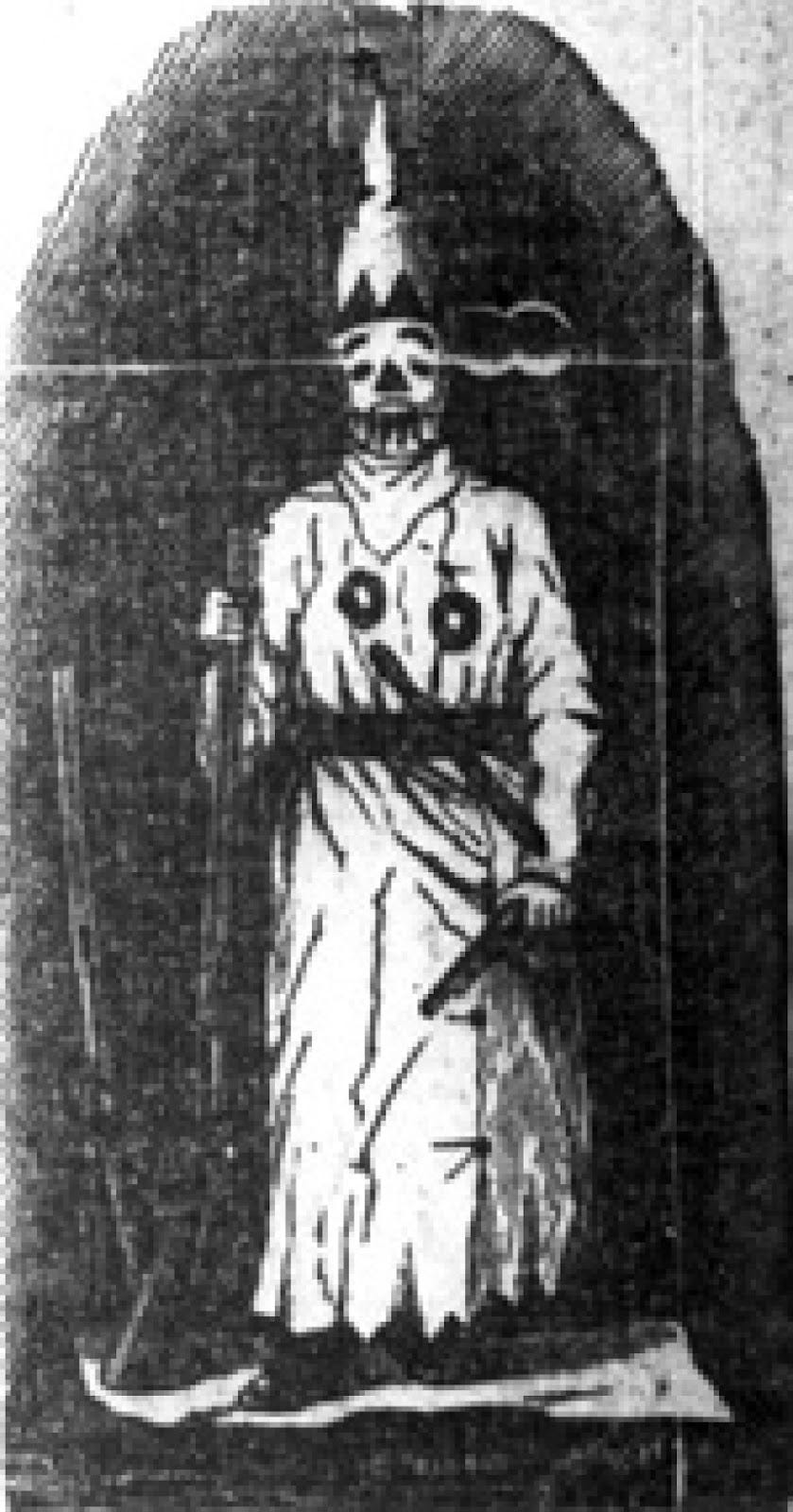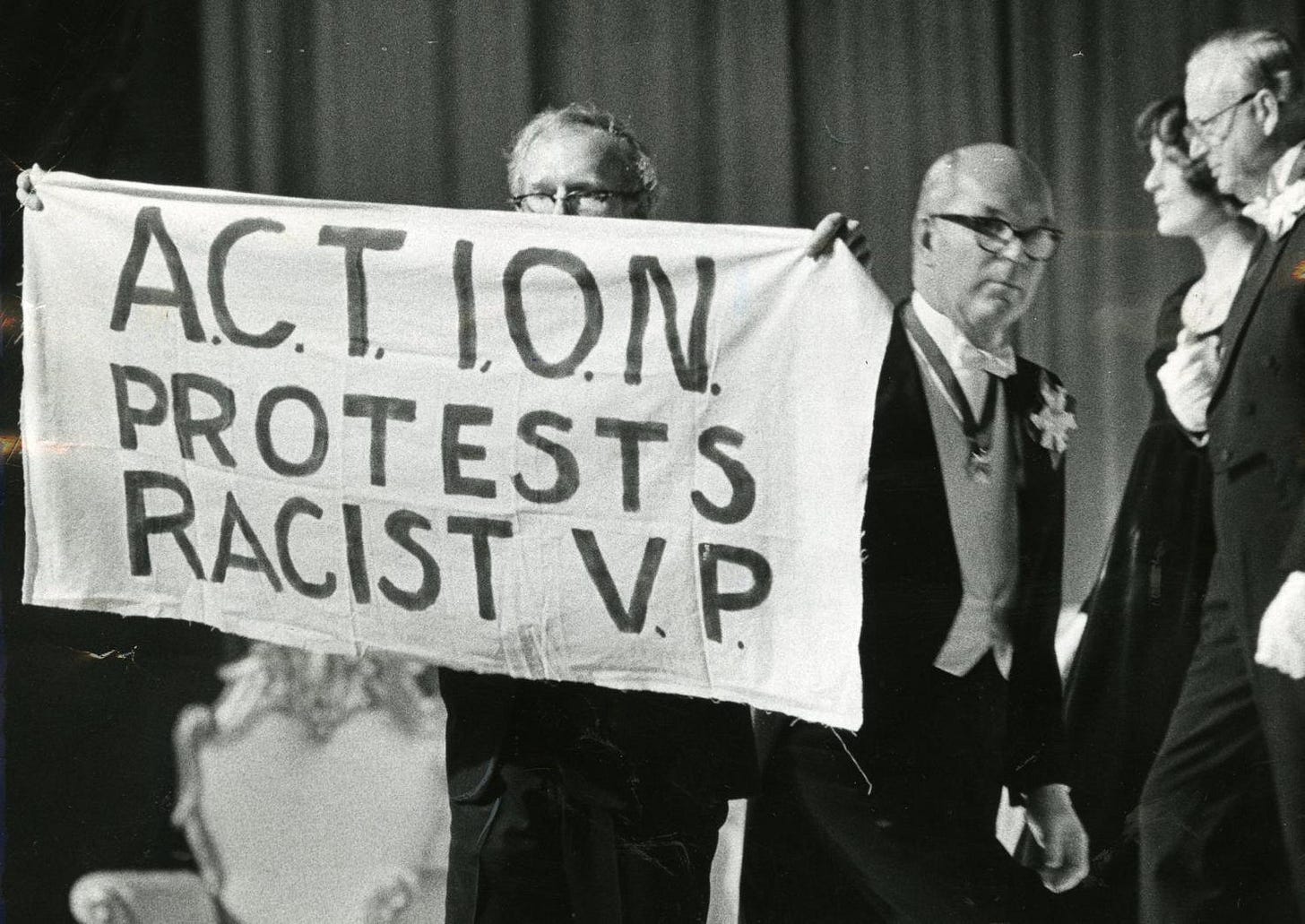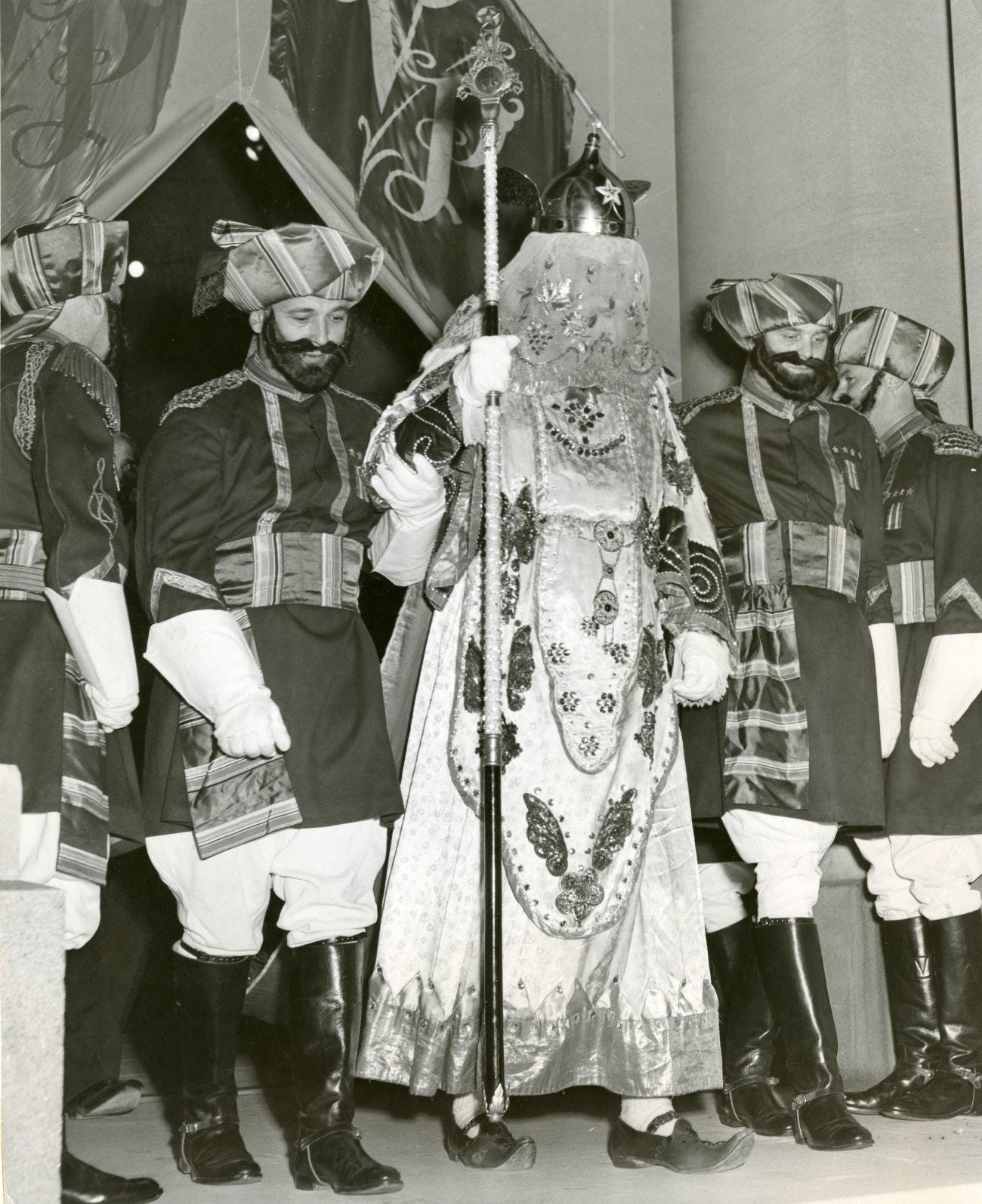The Veiled Prophet Organization and its Legacy of Racism and Exclusivity in St. Louis
The Troubling History and Ongoing Legacy of the Veiled Prophet Organization in St. Louis
The Veiled Prophet Organization: A Controversial Legacy Rooted in White Supremacy
The Veiled Prophet Organization (VPO) was founded in 1878 in St. Louis, Missouri as a secret society for wealthy white men. The VPO was founded by an individual named Charles Slayback, a former Confederate soldier who had fought to preserve slavery during the Civil War. The VPO has had a significant impact on St. Louis's history, but its history is also marred by controversy and allegations of racism and exclusion.
In its early years, the VPO was a secretive organization that only allowed wealthy white men to become members. The organization was founded by Charles Slayback, who had fought on the side of the Confederacy during the Civil War in an attempt to preserve the institution of slavery. The fact that the VPO was founded by someone with such a history raises questions about the organization's values and motivations.
The VPO has played a significant role in St. Louis's history, but its impact has not always been positive. The organization has been accused of perpetuating racism and exclusion by only allowing white members for much of its history. Additionally, the VPO's annual debutante ball, which features elaborate costumes and pageantry, has been criticized for its symbolism and imagery, which some see as promoting a white supremacist agenda.
Despite its controversial history, the VPO has been able to maintain its influence in St. Louis over the years. It has enjoyed close ties to local law enforcement, which has sometimes been used to suppress protests against the organization. However, there have also been efforts to challenge the VPO's exclusivity and demand greater transparency and accountability from the organization.
As we examine the history of the VPO, it is important to take a critical look at its founding and the impact it has had on St. Louis. The organization's history is a reminder of the ongoing struggle against racism and exclusion in America, and the work that remains to be done to build a more just and equitable society.
The Veiled Prophet Ball
The Veiled Prophet Ball is perhaps the most well-known event associated with the Veiled Prophet Organization (VPO). The debutante ball is steeped in tradition, with young women being presented to the Veiled Prophet as his "queen of love and beauty." The ball was first held in 1878 and has been an annual event ever since, with only a few interruptions.
The symbolism and imagery associated with the Veiled Prophet Ball have come under scrutiny in recent years. The Veiled Prophet himself wears a costume that includes a flowing white robe, a veil covering his face, and a pointed cap reminiscent of a Ku Klux Klan hood. The organization's name also evokes images of secrecy and exclusivity. These elements have led to accusations that the ball is steeped in racism and classism.

The VPO has attempted to distance itself from these accusations, stating that the organization is open to all races and backgrounds. However, critics argue that the ball's exclusivity and cost-effectively limit its attendance to the wealthy and privileged, perpetuating class divisions. Additionally, the symbolism associated with the Veiled Prophet himself is inherently racist.

The Veiled Prophet Ball has become a lightning rod for controversy in St. Louis, with protests and counter-protests surrounding the event in recent years. The symbolism and exclusivity of the ball make it a potent symbol of the city's deep-seated racial and class divisions.
Percy Green was a civil rights activist who became a prominent leader in the fight against the Veiled Prophet Organization. In the 1960s and 70s, Green and his organization, the Action Committee to Improve Opportunities for Negroes (ACTION), staged a series of protests against the VPO's annual ball and parade, which they saw as symbols of white supremacy and exclusion
In 1972, Green and other activists hatched a plan to unmask the Veiled Prophet during the organization's annual ball. They discovered that the man behind the veil that year was David Liniger, a prominent St. Louis businessman, and planned to expose him to the world. During the ball, Green and his fellow activists disrupted the event and unveiled Liniger, exposing him to the public. The incident received widespread media coverage, and the VPO was forced to confront accusations of racism and elitism.
The unmasking of the Veiled Prophet was a turning point in the history of the VPO. It revealed the organization's true nature to the public and sparked a new wave of protests against its exclusivity and racism. The VPO was forced to make some changes, including admitting Black members in 1979 and modifying the parade and ball in response to ongoing activism. However, the VPO still faced criticism for its lack of transparency and continued ties to St. Louis's power elite. The legacy of Percy Green and the unmasking of the Veiled Prophet remains an important chapter in the struggle for racial justice and equality in St. Louis.

Protests and Activism against the VPO
The Veiled Prophet Organization (VPO) has faced protests and criticism for its exclusivity and alleged racism since its founding in 1878. In the early 20th century, the VPO was a prominent force in St. Louis high society, with its annual Veiled Prophet Ball and parade drawing thousands of attendees. However, the organization's reputation began to decline in the 1960s and 1970s as civil rights activists and black St. Louisans began to speak out against its discriminatory practices.
In the 1960s and 1970s, civil rights activists and black St. Louisans began to protest against the VPO's exclusivity and alleged racism. In 1969, the group Action Committee to Improve Opportunities for Negroes (ACTION) led a protest outside the Veiled Prophet Ball, with over 200 demonstrators chanting "We want jobs, not charity." The protest was met with police violence, and several protesters were arrested.
In the 1980s and 1990s, protests against the VPO continued. In 1991, the organization Faces of the Veiled Prophet was formed to protest against the VPO's racism and exclusivity. The group held demonstrations outside the Veiled Prophet Ball and called for a boycott of the event. In 1992, the VPO attempted to change its image by inviting a black man, Maurice D. Green, to become the Veiled Prophet. However, Green declined the offer, citing the organization's lack of diversity.
In recent years, activist groups have sought to unmask the Veiled Prophet and target VPO members' corporations. In 2014, the group We Are Change St. Louis released a video claiming to reveal the identity of the current Veiled Prophet. The video received widespread attention, but the VPO denied the claim.
In 2020, following the death of George Floyd and the nationwide protests against police brutality and systemic racism, the VPO faced renewed scrutiny. Activist groups, including the Organization for Black Struggle and Expect Us, called for the organization to be dismantled and for its members to be held accountable for their actions. The groups also targeted VPO members' corporations, calling for boycotts and protests outside their businesses.
In response to the protests and activism, the VPO announced in June 2020 that it would "take concrete steps to move beyond our traditions and establish a more diverse and inclusive organization." The organization also pledged to donate $1 million to "support the region’s African American community."
Overall, the Veiled Prophet Organization has faced protests and criticism for its exclusivity and alleged racism for over a century. While the organization has attempted to change its image in recent years, it remains controversial and has faced continued activism and calls for accountability.

Percy Green's activism against the VPO
Percy Green, a civil rights activist in St. Louis, was one of the most prominent figures in the fight against the VPO. In the 1960s and early 1970s, Green led a number of protests against the VPO's exclusionary policies and racism, including a successful boycott of the city's Christmas parade, which the VPO had helped organize. Green also spoke out against the VPO in the media, calling it a "symbol of oppression" and urging St. Louisans to "stand up and be counted against this evil."
In 1972, Green and a group of fellow activists hatched a daring plan to unmask the Veiled Prophet at the VPO's annual ball. The plan involved purchasing tickets to the event, then waiting until the Veiled Prophet appeared on stage to remove his hood, at which point Green and his cohorts would rush the stage and reveal his identity to the crowd.
On the night of the ball, Green and his team managed to make it inside the venue, but their plan was foiled when they were recognized by VPO members and escorted out before the Veiled Prophet appeared on stage. Despite the failure of the plot, however, the incident received widespread media attention and sparked renewed criticism of the VPO's secrecy and exclusivity.
Following the failed unmasking attempt, the VPO faced increased scrutiny and public backlash. Many St. Louisans, including some prominent business leaders, spoke out against the organization's elitism and called for greater transparency and inclusivity. The incident also helped to galvanize the broader civil rights movement in St. Louis, as activists and community members rallied around Green and his efforts to expose the VPO.
In the years that followed, the VPO made some efforts to improve its image and expand its membership base, including allowing women and people of color to join. However, the organization remained largely closed off to the public, and its ties to the city's business and political elite continued to fuel criticism and suspicion. To this day, the Veiled Prophet organization remains a controversial and often divisive presence in St. Louis.

Law Enforcement and the VPO
The Veiled Prophet Organization's close ties to law enforcement have been a significant source of controversy and criticism over the years. The wealthy white St. Louisans who founded the VPO also held significant influence over local law enforcement agencies. This relationship between the wealthy elite and law enforcement often worked to the disadvantage of black St. Louisans, who faced systemic racism and discrimination within the justice system.
The VPO's relationship with law enforcement dates back to its earliest days. In 1877, the Police Commissioner of St. Louis, John W. Gates, played a central role in violently ending a strike by railroad workers, which was seen as a threat to the interests of the city's wealthy elite. The violence led to the deaths of over a dozen workers and bystanders and served as a stark reminder of the power imbalance between the city's wealthy and its working-class residents.
In 2015, the St. Louis Police Chief at the time, Sam Dotson, attended the Veiled Prophet Ball, drawing criticism from activists and community members who argued that the police should not be associated with an organization with a history of racism and exclusivity. Dotson defended his attendance, stating that it was a way to build relationships with the city's elite, but the incident served as a reminder of the ongoing tensions between the police and the community they serve.
The close relationship between the Veiled Prophet Organization and law enforcement underscores the systemic inequalities and injustices that have long plagued St. Louis. It also highlights the ongoing challenges faced by activists and community members seeking to hold those in power accountable and promote greater equity and justice for all.

Changes in the VPO
The Veiled Prophet Organization has undergone significant changes in response to criticism and activism. After years of protests against the organization's exclusivity, the VPO admitted its first Black members in 1979. This move was seen as a significant step towards addressing the organization's racist reputation.
Over the years, the Veiled Prophet Parade and Ball have faced protests and criticism from various groups who see the events as symbols of racism and elitism. As a result, the VPO has made efforts to change the image of the parade and ball. In recent years, the organization has focused on making the events more family-friendly and inclusive.
It is unclear whether the changes made by the VPO were motivated by a desire to address its racist reputation or to improve the public image of the organization. However, many believe that the changes were a result of the continued pressure from activists and the wider community to address issues of racism and exclusivity.
The Ellie Kemper Controversy
In 1999, Ellie Kemper, then a 19-year-old freshman at Princeton University, was crowned the "Queen of Love and Beauty" at the Veiled Prophet Ball. Photos of Kemper at the ball resurfaced in 2021, sparking a renewed discussion about the event's racist history.
Many have criticized Kemper's participation in the Veiled Prophet Ball, arguing that it is an example of white privilege and ignorance of the event's racist history. Kemper issued a public apology for her involvement in the event, acknowledging the harm it has caused
The Ellie Kemper controversy has highlighted the ongoing issues of racism, privilege, and cultural appropriation in American society. It has sparked a wider conversation about the need for individuals to acknowledge and confront the racist history of institutions and events in which they participate.
Lessons from the Veiled Prophet: Moving Forward in the Fight Against Racism and Inequality in St. Louis
The Veiled Prophet Organization's history is complex and fraught with issues of race, class, and power. The organization was created by wealthy white St. Louisans as a means of asserting their dominance and influence over the city's social and economic landscape. The organization's exclusive debutante ball and parade have long been criticized for their racist and elitist undertones.
However, the VPO has also undergone significant changes over the years. In 1979, the organization finally began to admit Black members. In recent years, the VPO has made changes to the parade and ball in response to criticism and activism.
Despite these changes, the VPO's legacy remains deeply intertwined with St. Louis's history of racial and economic inequality. The organization's close relationship with law enforcement and political power has also been a cause for concern.
Furthermore, the recent controversy surrounding Ellie Kemper's involvement in the Veiled Prophet Ball has brought renewed attention to the organization's troubling history and the ways in which it continues to impact society and culture.
It is clear that much work remains to be done in addressing the legacy of the Veiled Prophet Organization and the broader issues of racism and inequality that it represents. However, through continued activism and awareness-raising, progress can be made toward a more just and equitable future for all.







